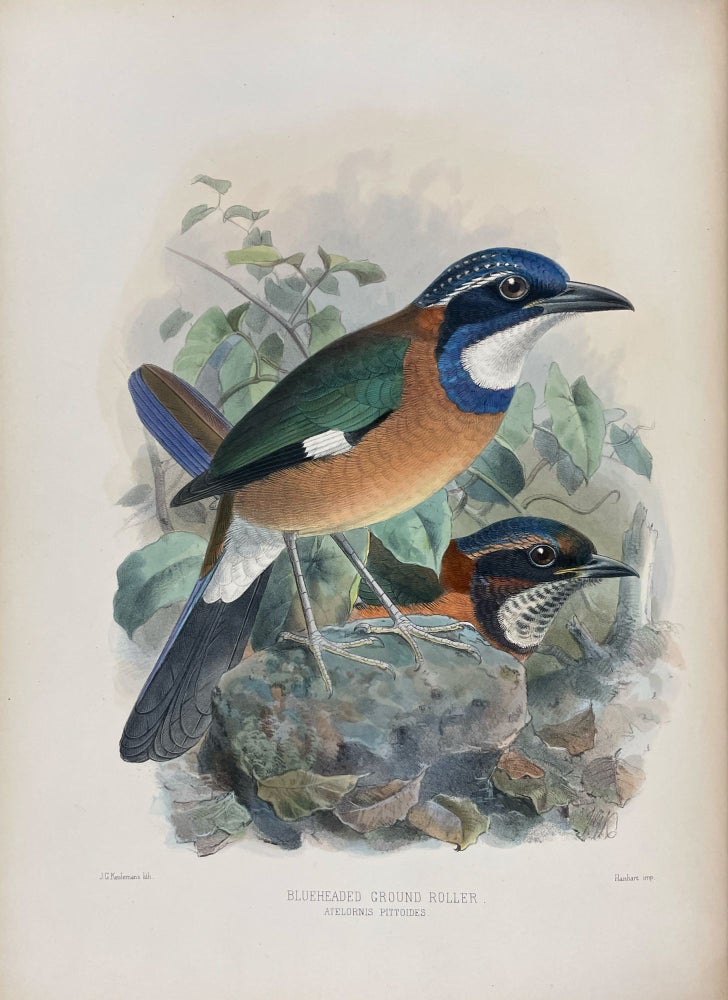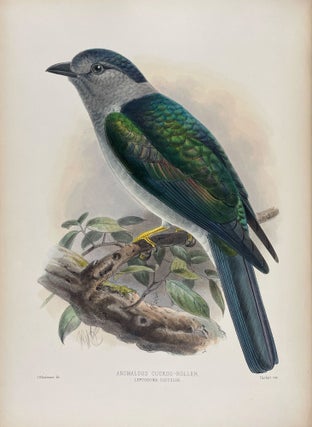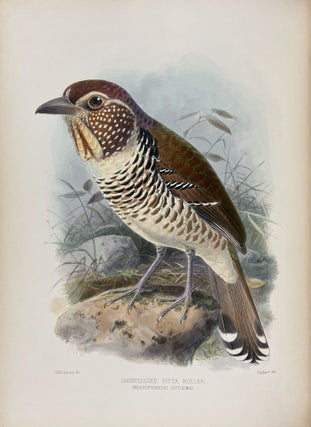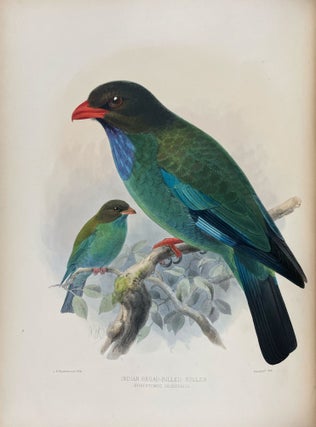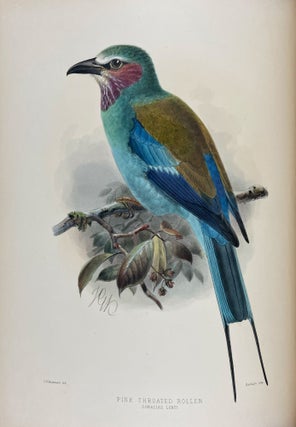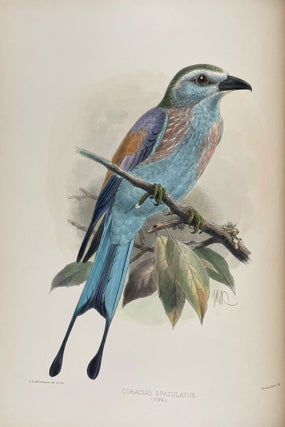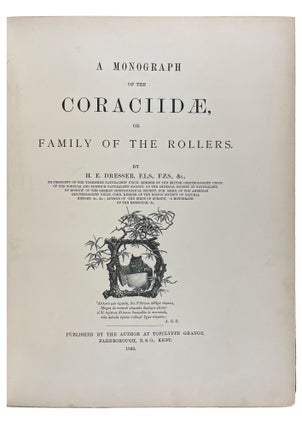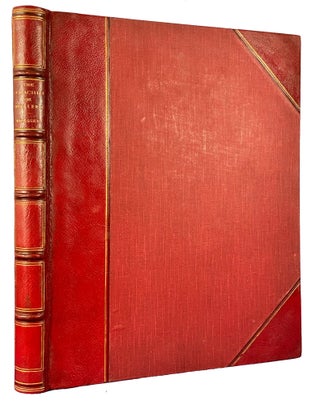DRESSER, Henry Eeles (1838-1915)
A Monograph of the Coraciidae, or the Family of the Rollers
Farnborough, Kent: 1893. Large quarto. (14 3/4 x 11 1/4 inches). Title page with woodcut vignette (owl) and quote in Greek; xx, 111 pp. 27 hand-coloured lithographic plates.
Contemporary half red morocco over red cloth. Gilt and blind rules on boards. Spine with 5 raised bands, gilt and blind rules, gilt lettering. Marbled endpapers. Top edge gilt, other edges uncut.
A fine copy, limited to an edition of 200 copies, of what is one of the most beautiful bird monographs ever published.
Dresser was born in Thirsk, Yorkshire to a banking and trading family. As a young boy, Dresser was taken out of school and sent to Ahrensburgh to learn German and later to Gefle to learn Swedish as his father intended him to take over the business in the Baltic timber trade. While learning Finnish, Dresser travelled round the Baltic coast. Dresser's lifelong interest in birds began during his teenage years when he started collecting bird skins and eggs. In 1858, while in Finland, Dresser discovered breeding waxwings and became the first Englishman to collect their eggs, which brought him fame amongst English ornithologists. In addition to seeking out orinthologists to exchange birds and eggs, Dresser travelled widely including to Texas during the American Civil War, his notes during which time were published in The Ibis and served as a leading source of information for the period and include mention of several interesting birds including the extinct (or almost extinct) Ivory-Billed Woodpecker, the almost extinct Eskimo Curlew and the endangered Whooping Crane. Dresser went on to author more than one hundred scientific papers on birds as well as many monographs including the present work on select species, aided by his experise and privileged access to the notes and collections of some of the most distinguished orinthologists of his day. The present monograph focuses on Rollers, an old world family (Coraciidae) of near passerine birds. The group gets its name from the aerial acrobatics some of these birds perform during courtship or territorial flights. Rollers resemble Crows in size and build, and share the colorful appearance of Kingfishers and Bee-Eaters. They are mainly found in Africa and Asia. A Monograph of the Coraciidae is "a thoroughly detailed study of this family of birds with excellent hand-coloured plates" (Zimmer). It includes notes on the anatomy and osteology by Frank E. Beddard and illustrations by the famous Dutch bird illustrator John Gerrard Keulemans (1842-1912). "The great value of Keulemans' work as an ornithological draughtsman," writes Christine E. Jackson, "lay in his sureness of design of the plate and his accuracy in portraying the birds themselves. The bird figures were carefully drawn and executed down to the last scales on the feet. The feathering was neatly delineated with the different plumes receiving sympathetic treatment, the fine soft under-plumage and the large flight feathers being equally well drawn."
Jackson, Bird Illustrators. Some Artists in Early Lithography, p. 90-91; Keulemans and Coldewey, Feathers to Brush, the Victorian Bird Artist John Gerrard Keulemans pp. 31, 61; Nissen IVB, 270; Sitwell, Fine Bird Books (1990), p. 92; Ayer/Zimmer p.178; Wood 324.
Item #40835
Price: $9,500.00

